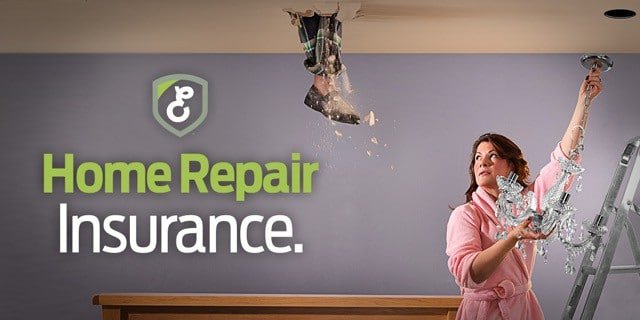
6 Dangerous Home Renovation & Design Trends You Should Avoid
November 24, 2023
Share:
Renovating your home is an exciting, albeit stressful, endeavour. It takes a lot of time, money, and effort to do – not to mention the fact that some popular trends can be dangerous. You read that right: there are several popular renovation and design trends out there in the world that, while appealing at first glance, can be dangerous. To avoid having to make an unexpected home insurance claim (and even an unpleasant trip to the emergency clinic), you may want to reconsider the following renovation and design trends for your home.
#1: Open staircases.
Open staircases certainly have a more aesthetic appeal than their closed-off alternatives. They bring in natural light and can make a space seem much larger. Unfortunately, open staircases can prove a hazard to your guests and family members. To make this renovation/design trend a success, you will need to consider the risk of slips and falls, weight limits, and fall-through.
Slipping is one of the biggest hazards. For younger children, this is especially dangerous. The railing should be designed to be easily grab-able. Fall-through can be avoided by adding additional material at the top of each step to reduce the risk of guests or family members falling through/getting stuck in the gaps. As for a weight limit, you should ensure that the staircase you incorporate can withstand the weight of numerous people over a long duration of time.
You’ll want to maintain additional caution with a renovation like this if you have any young children or elderly folk living in your home or that visiting often.
#2: Reclaimed wood décor.
Wood is a fire hazard – especially when placed in the center of your living space, near appliances, or in an area of your home that might be close to other décor, such as candles. While, yes, it’s a lot better to reuse reclaimed wood than it is to chop down a new tree, the wood aesthetic isn’t always worth the huge fire hazard. The same goes for wicker. Wicker is pretty to look at, but it can be a fire hazard.
What about hammocks? Hammocks are often associated with “peaceful” scenes of relaxing in the great outdoors, offside a beach, or a large body of water. Unfortunately, they can be a liability risk if anyone should get stuck in the netting or fall off. Ensure that if you want to implement a hammock that it is anchored to a strong post or wall. Any children that use your hammock should be supervised.
#3: Exposed pipework.
Classic layouts, such as exposed pipework, can offer a distinct visual. Unfortunately, these can be outdated and may not be safe. Exposed pipework is aesthetically interesting, but any damage and knocks can quickly create larger issues in a home.
Many homeowners consider this design choice not just for the appearance, but also for the increased thermal comfort and the ease of maintenance. Exposed pipes can easily disperse heat into a room rather than just into the walls.
This should not be a deciding factor – note that most modernized systems have removable panels to easier access pipes and ducts for maintenance work. If you do choose to have exposed pipework as a design choice, ensure that there is enough clearance room to avoid bumps and scrapes, and so that you have the space to clean between the walls and pipes.
#4: Floating shelves
Floating shelves can be a safe inclusion and a great design choice, so long as you are utilizing shallower structures (the deeper they are, the less weight they hold), with increased durability and weight capacity. Floating shelves can be dangerous if they are too overloaded and can fall, causing damage to anything below – or anyone. Ensure that you are aware of your floating shelf’s weight capacity before you start stacking things on them.
You can increase the capacity of your floating shelf by adding more rods to stabilize the bracket. The weakest attachment point of your shelf will detriment how strong the overall shelf is. Include additional screws and ensure that the entire length of the shelf is attached to something sturdy so that it doesn’t flex or sag with time.
#5: Antique appliances
Early toasters, older refrigerators, laundry appliances, hair dryers, etc. aren’t exactly a renovation but a design choice to add appeal to a home. Many homeowners like the look of classic appliances. They have a very distinct look and feel. However, they can be a fire hazard with all their outdated wiring and potential wear-and-tear. While it can bring a little “oomph” to a room, these appliances can pose a potential risk. You may wish to avoid this option altogether and replace antique appliances with more modern versions – as cool as the former may appear.
#6: Open floor plans
An open floor plan can make a space seem much larger than it is. From a first glance, it doesn’t seem like this sort of renovation/design choice would pose much risk. After all, there’s not much in that area – right? Unfortunately, open floor plans can be a hazard if a fire should ever break out. Fire can move much quicker into other spaces in an open floor plan without a barrier to slow it down. When you include flammable furniture – like a sofa, couple of chairs, etc., your kitchen’s grease fire could quickly go from “troublesome” to “devastating” with the increased risk of severe combustion.
A good home insurance policy is designed to protect you and your household from damages that occur unexpectedly. That being said, it’s not something you should rely on every time something goes wrong. If you are making a new design choice in your home, ensure that it’s safe, up to code, and isn’t posing an unnecessary threat to your guests or household members. If you can’t do that, maybe it’s time to rethink your latest renovation idea.






